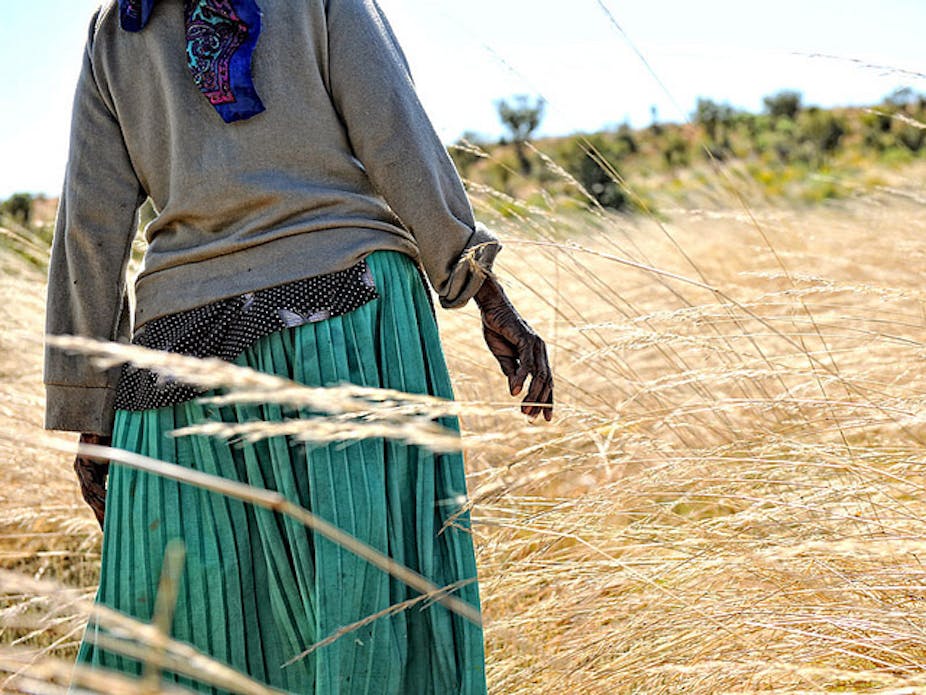This is a story about two small Aboriginal communities in the Gulf region of North Queensland: Mornington Island and Doomadgee. They share two key characteristics with many other remote communities: very poor health status on every dimension and fragile permanent staffing of their health services. But they also share an increasingly common third characteristic: an abundance of fly-in, fly-out siloed health services.
I recently visited Mornington Island to learn more about primary health-care delivery in the region. Getting off the plane with me was a renal nurse practitioner, a sexual health nurse, an alcohol and drug worker and a mental health worker, all arriving for their regular visits and clinics. The Royal Flying Doctor Service wasn’t in town for its clinics that day, and, of course, specialist doctors normally come by charter. The same sort of pattern applies in Doomadgee.
I spent about an hour in Mornington talking to an elder, whose main message to me was not about the key health problems in her community but that the community had established mechanisms for consultation that were being ignored.
Aunty Pearl (not her real name) made a heartfelt plea for the community to be consulted before new services were helicoptered in, and for community leaders to be apprised of new clinics being established, so that if they were local priorities, the leaders could work with the whole community to build awareness of the new clinics and hence increase their effectiveness.

In Doomadgee, a whole new service is being established by a new-to-the-town non-government agency. Local health services know it will provide health services for kids but have no idea about the specifics, whether it will duplicate what they are doing already, or how it will integrate with existing services and existing staff.
I asked staff to estimate what sort of contribution the existing fly-in fly-out services were making: were they mostly bringing skills or just time to do things the overworked locals didn’t have time to do? The answer in this non-scientific survey was about 90% skill, 10% time.
The follow-up, then, was whether, with purposive effort (which isn’t seriously occurring now), that ratio could change, by how much and by when? The response was it could shift to 50/50 over an 18-month period.
So here’s the rub. We are all full of good intentions, we want to do something about the Aboriginal health tragedy, and do it now.
But what we are doing is not creating a sustainable service. Staffing by locums, agency and fly-in fly-out staff is expensive. They generally don’t provide continuity of care. And we get the dismal trifecta because they disempower the locals and don’t build a sustainable, local workforce.
The international development literature is [full of papers](http://heapol.oxfordjournals.org/content/21/6/411.abstract?sid=cb38953e-c2e2-4eed-b46a-1b0bad7fdfb5](http://heapol.oxfordjournals.org/content/21/6/411.abstract?sid=cb38953e-c2e2-4eed-b46a-1b0bad7fdfb5) on the [distorting effects](http://ajph.aphapublications.org/doi/abs/10.2105/AJPH.2008.154856](http://ajph.aphapublications.org/doi/abs/10.2105/AJPH.2008.154856) of siloed funding: specialist disease-specific funding agencies establishing narrowly-defined, specific programs available to developing countries with no one willing to fund the broad primary health-care infrastructure which is necessary for a sustainable and effective health system.
We are doing the same in Australia with special funding programs by state, Commonwealth and non-government agencies. Which brings me back to Aunty Pearl. What we need is good local priority setting: working with the community to determine the local health-care needs.

But let’s not be naive: local planning is hard. Humans and local communities suffer from bounded rationality: we don’t know what we don’t know. So local planning needs to be supported and informed by planning in the larger region or district.
We also need ongoing effective mechanisms to ensure local collaboration among service providers, which do something about long-term workforce sustainability. The 50/50 skill-to-time ratio or even the 90/10 one begs the question of whether the benefits of higher order skills being provided to these communities are greater than the coordination costs created.
For communities where chronic disease is so prevalent, the place to start is clearly to ensure a good primary care foundation. Wagner’s chronic care model now forms the base of chronic disease management and promotes the idea of “productive interaction” between an “informed, activated patient” and a “prepared, proactive practice team”. Both sides of this interaction require support to be effective.
In Wagner’s model, support comes both from the community (in terms of resources, policies, and self-management support) and from the health system, involving improvements to the organisation of health care, delivery system design, decision support, and clinical information systems.

This does not appear to be happening in either Doomadgee or on Mornington Island, or at least, is happening only in fits and starts.
The fly-in, fly-out model of siloed care I saw is certainly responding to the immediate needs of those communities. But it may be doing so in a way that inhibits a long-term improvement in the health of these communities.

